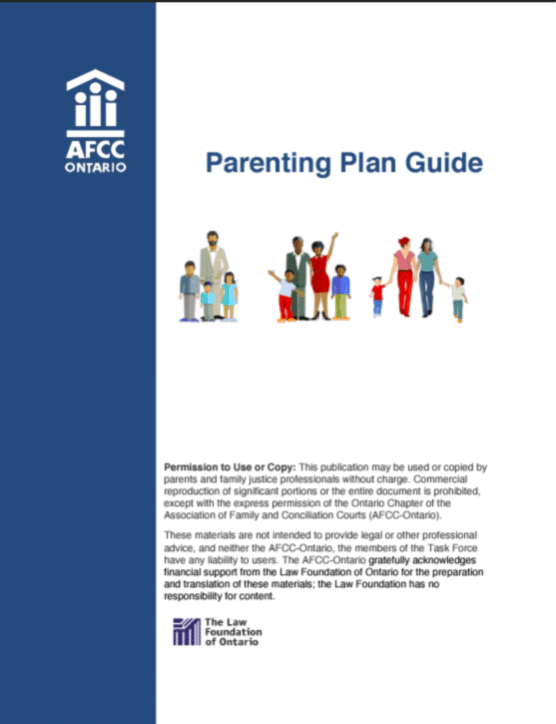Insider Tips on Child Custody That Lawyers Won’t Share
It’s important to note that the court-mandated custody arrangement determines whether the children will primarily live with one parent or split their time between both parents. It’s also crucial to distinguish between custody and access arrangements. Access refers to the non-residential parent’s right to spend time with the children, and it can vary based on the parent’s ability to work together. In cases where one parent has a history of abuse or neglect, the court may restrict their access to the children.
Government of Canada. “Selected Statistics on Canadian Families and Family Law.” Department of Justice, 2000. Accessed on June 18 2023. Available at: Tap Here.
To prepare for a child custody mediation session, gather all relevant information about your child’s needs, your schedule, and any other important factors. Be ready to discuss your priorities and be open to compromise. It’s also helpful to have a list of potential solutions and to stay focused on the best interests of your child.
While child custody lawyers can provide valuable legal advice, relying solely on a lawyer can lead to higher costs, increased conflict, and a loss of control over the final outcome. Mediation, on the other hand, promotes a more collaborative and cost-effective approach.
If an agreement cannot be reached through mediation, you still have the option to pursue legal action in court. However, many parents find that with the help of a skilled mediator, they are able to reach a satisfactory agreement without needing to go to court.
During the mediation process, both parents will meet with a neutral mediator who will help them discuss their concerns and priorities. The mediator will assist in negotiating and drafting a custody agreement that reflects the best interests of the child. The process is typically confidential and non-binding until an agreement is reached.
Yes, mediation can be effective even in high-conflict situations. A skilled mediator can help facilitate productive discussions, manage tensions, and guide both parties toward a fair and workable agreement.
Mediation offers a less adversarial and more cost-effective approach to resolving child custody issues. It promotes cooperation and communication between parents, resulting in more sustainable and mutually agreeable arrangements.
The best way to handle child custody arrangements is through mediation. Mediation allows both parents to collaborate and create a personalized plan that suits the needs of their children without the stress and expense of court proceedings.
The odds of a father getting 50/50 custody depend on various factors such as the child’s best interests, the father’s involvement in the child’s life, and the ability to co-parent effectively. Courts in Ontario aim to ensure that both parents have a meaningful role in their children’s lives, making 50/50 custody increasingly common.
No, it is not necessarily hard to get 50/50 custody if both parents are capable of providing a stable and nurturing environment for the child. Courts are increasingly supportive of shared custody arrangements that serve the child’s best interests.
50/50 custody in different school districts can be challenging. Parents need to coordinate school schedules, transportation, and extracurricular activities. Courts will consider the logistical feasibility and the impact on the child’s education and well-being.
To win sole custody in Ontario, you must demonstrate that it is in the best interests of the child. This can involve showing evidence of the other parent’s inability to provide a safe and stable environment, as well as your own ability to meet the child’s needs.
Full custody means that one parent has exclusive legal and physical custody of the child. This parent is responsible for making all major decisions regarding the child’s upbringing and welfare. The other parent may still have visitation rights.
A judge might not grant 50/50 custody if it is not in the child’s best interests. Factors such as one parent’s inability to provide a stable environment, lack of cooperation between parents, or safety concerns could influence the decision.
A custody dispute occurs when parents cannot agree on the custody arrangement for their child. This disagreement can involve various issues such as physical custody, legal custody, visitation schedules, and decision-making responsibilities.
Child custody statistics can vary, but generally, courts aim to ensure children maintain strong relationships with both parents. Joint custody arrangements are becoming more common, reflecting a trend towards shared parenting responsibilities.
In a custody battle, factors such as a history of abuse, neglect, substance abuse, or inability to provide a stable environment can be used against a parent. Courts prioritize the child’s best interests and safety in their decisions.
The chances of getting 50/50 custody are relatively high if both parents are actively involved in the child’s life, can co-parent effectively, and such an arrangement serves the child’s best interests. Courts in Ontario support shared parenting.
The likelihood of a father getting 50/50 custody is good if he can demonstrate his involvement in the child’s life and his ability to co-parent effectively. Courts in Ontario prioritize the child’s best interests, which often include maintaining relationships with both parents.
Supervised visitation guidelines in Ontario ensure the safety and well-being of the child during visits with the non-custodial parent. Visits are typically supervised by a neutral third party, and the specifics can vary based on court orders and the family’s needs.
If there is no court order, both parents have equal rights to custody in Ontario. It is advisable to seek a formal child arrangements agreement through mediation or by court order to prevent potential conflicts and ensure the child’s best interests are met. Mediation can provide a less adversarial and more cooperative approach to resolving custody issues.
Sole decision-making means one parent has the authority to make major decisions about the child’s life, such as education and healthcare. Sole custody includes both decision-making and physical custody, meaning the child primarily lives with one parent.
Child custody cases are decided based on the child’s best interests rather than which parent ‘wins.’ Courts aim to create arrangements that allow children to maintain strong relationships with both parents whenever possible.
To get custody of your child, start by documenting your involvement in their life and ability to provide a stable environment. File for custody in family court, provide necessary documentation, and be prepared to demonstrate that your desired arrangement is in the child’s best interests.
In Ontario, there is no specific age at which a child can decide which parent to live with. Courts consider the child’s wishes as one of many factors, with more weight given to the child’s preference as they get older and more mature.
Judges consider various factors in child custody cases, including the child’s best interests, each parent’s ability to provide a stable environment, the child’s relationship with each parent, and any history of abuse or neglect. The goal is to ensure the child’s well-being and safety.
A New Era of Child Custody Dispute Resolution

Professional help in preparing your parenting agreement
Several professionals are available to assist separating parents in preparing a parenting agreement. Here are some standard options:
In conclusion, navigating the complexities of separation and co-parenting can be a challenging journey. However, it is not a path that you have to walk alone. Numerous professionals, such as family lawyers, mediators, parenting coordinators, collaborative law professionals, and family counsellors or therapists, can provide invaluable assistance. They can guide you through the process, help you negotiate and communicate effectively, and assist in drafting a parenting agreement that prioritizes your children’s best interests.
However, ensuring that these professionals have integrated the best practices outlined in the AFCC-O Parenting Plan Guide is crucial. This guide provides a comprehensive framework for creating a parenting plan that is fair, realistic, and child-focused. By adhering to these best practices, you can transition from disappointed spouses to supportive co-parents, keeping your family’s welfare at the forefront and potentially avoiding the stress and conflict of family court.
Remember, the goal is to separate amicably and build a strong foundation for co-parenting that supports your children’s growth and well-being. You can achieve this objective with the right professional help and adherence to proven guidelines.
External Links:
- Family Dispute Resolution in Family Law – Explanation of family dispute resolution (FDR) methods like mediation and arbitration, and their benefits over court litigation.
- Child Custody and Access – Explanation of child custody and access orders, and how joint custody arrangements can be beneficially agreed upon outside of court.
- Be Prepared for Custody Cases – Advice on preparing for child custody cases, with a focus on alternative dispute resolution methods to avoid court battles.
- What You Need to Know About Child Custody Disputes in Canada – Hamilton Cahoon provides an overview of different child custody arrangements and how out-of-court agreements can be beneficial for parents.
- Who decides child custody issues? – Legal Line offers detailed information on arbitration as an alternative to court for resolving child custody and other family law matters.
- Custody Litigation – How to Have Your Child’s Opinions Heard in Court – LK Law explains the process and benefits of section 211 reports and “hear the child” reports in custody disputes, emphasizing child-centered approaches.
- Be prepared when a child custody case goes to court – Kirk Montoute Dawson LLP provides insights on alternative dispute resolution methods, including mediation and arbitration, for child custody cases.
- Resolving disputes – think about your options – Justice Canada discusses various dispute resolution options, highlighting the benefits of mediation and arbitration for resolving custody issues outside of court.
- Custody battles in Canada: Everything you need to know – Lexpert provides a thorough explanation of both judicial and extrajudicial custody battles, with a focus on the increasing preference for out-of-court settlements.
- Child Custody Statistics in Canada: Is There Gender Bias? – This article explores statistics on child custody arrangements in Canada, showing a significant number of cases settled outside of court.
Ken Maynard CDFA, Acc.FM
I assist intelligent and successful couples in crafting rapid, custom separation agreements that pave the way for a smooth transition towards a secure future. This efficient process is achieved in about four meetings, effectively sidestepping the excessive conflicts, confusion, and costs commonly linked to legal proceedings. Clients have the flexibility to collaborate with me either via video conference or in-person through a DTSW associate at any of our six Greater Toronto mediation centers, located in Aurora, Barrie, North York, Vaughan, Mississauga, and Scarborough.
Have a few questions - Tap here to Schedule a Get Acquainted Call

















































